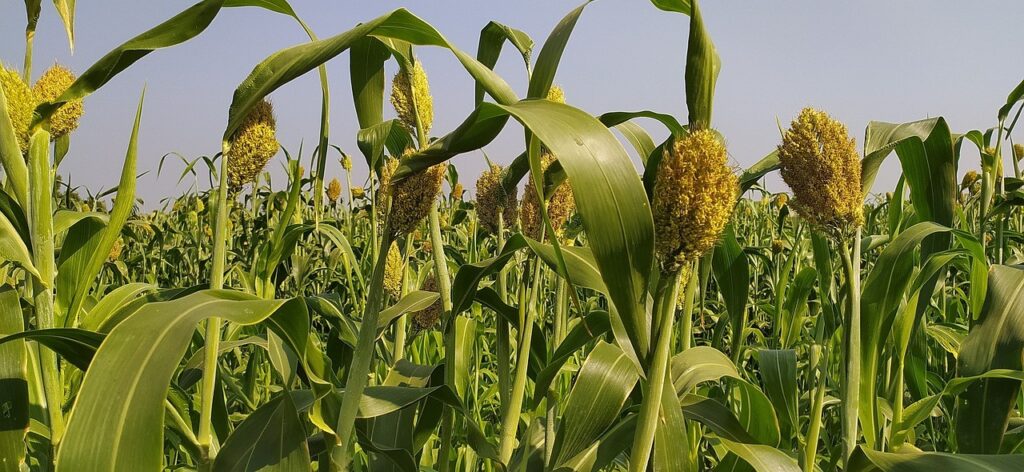In our quest for a sustainable future, agroforestry agriculture has sprung up as a beacon of hope, promising to strike a delicate balance between humanity’s needs and our planet’s preservation. As an intriguing and innovative approach to land use, agroforestry agriculture is not just a farming practice; it’s a philosophy, a way of life that harmonizes human activities with the natural world.
Agroforestry agriculture, also known as agroforestry or agroecology, is gaining popularity as farmers and environmentalists seek innovative ways to address food security, climate change, and biodiversity conservation. This ancient practice not only enhances soil fertility, water management, and carbon sequestration but also provides diverse income streams for farmers.
Today, let’s journey to uncover the meaning, delve into the types, and explore the multifaceted benefits of agroforestry agriculture.
What is Agroforestry Agriculture?
Agroforestry agriculture is a land management system that integrates trees or shrubs with crops and livestock in a symbiotic manner. This practice involves growing crops alongside trees or shrubs, creating a mutually beneficial relationship. The trees provide shade, act as windbreaks, and contribute to soil fertility through nitrogen fixation, while the crops provide food and income for farmers.
Agroforestry agriculture can be traced back to ancient civilizations, where farmers recognized the benefits of combining trees with their crops. Today, this practice has evolved to address modern challenges such as climate change, soil erosion, and declining biodiversity. Agroforestry agriculture promotes sustainable land use and enhances the resilience of farming systems by mimicking natural ecosystems.
Types Of Agroforestry Systems
There are various types of agroforestry systems, each with its unique characteristics and advantages. Let’s explore some of the most common types:
- Alley cropping: In this system, rows of trees or shrubs are planted between rows of crops. The trees provide shade, reduce soil erosion, and contribute organic matter to the soil. The crops benefit from the protection offered by the trees, resulting in increased productivity and reduced pest damage.
- Silvopasture: Silvopasture combines trees, forage crops, and livestock. The trees shade the animals, reducing heat stress and improving their overall well-being. The forage crops provide a source of food for the livestock, while the animals contribute to nutrient cycling through their manure.
- Forest farming: Forest farming involves cultivating specialty crops, such as medicinal herbs or mushrooms, under the shade of a forest canopy. This system utilizes the natural structure and biodiversity of the forest to create a diverse and sustainable farming system. Forest farming provides a source of income and promotes the conservation of native ecosystems.
Top 5 Benefits of Agroforestry Agriculture
Agroforestry agriculture offers various benefits that promote environmental and economic sustainability. Let’s explore some of the key advantages of this farming approach:
- Soil fertility: The presence of trees in agroforestry systems enhances soil fertility through nitrogen fixation and the addition of organic matter. The leaves and branches that fall from the trees decompose, enriching the soil with nutrients and improving its structure. This leads to increased crop productivity and reduced reliance on synthetic fertilizers.
- Water management: Agroforestry systems contribute to improved water management by reducing soil erosion and increasing water infiltration. The trees act as natural buffers, preventing runoff and reducing the risk of flooding. The deep root systems of trees also help to regulate groundwater levels, making agroforestry agriculture more resilient to drought conditions.
- Carbon sequestration: Agroforestry agriculture is vital in mitigating climate change by arresting atmospheric carbon dioxide. Trees are excellent carbon sinks, absorbing and storing carbon in their biomass and the soil. This helps to reduce greenhouse gas emissions and combat global warming.
- Biodiversity conservation: Agroforestry systems provide habitat for various plant and animal species, promoting biodiversity conservation. The presence of trees and shrubs creates a mosaic of microhabitats, supporting a variety of wildlife. This contributes to the preservation of native ecosystems and helps to protect endangered species.
- Diverse income streams: Agroforestry agriculture offers farmers multiple income streams, reducing their dependence on a single crop. Farmers can tap into various markets and increase their resilience to market fluctuations by diversifying their production. For example, they can sell timber, fruits, nuts, medicinal plants, and their primary agricultural products.
Examples Of Successful Agroforestry Projects
Agroforestry agriculture has been successfully implemented in various parts of the world, showcasing its potential to transform farming systems. Here are a few examples of successful agroforestry projects:
- The “Evergreen Agriculture” initiative in Africa: This project promotes the integration of nitrogen-fixing trees with staple crops such as maize and beans. Smallholder farmers in Africa have experienced increased crop yields, improved soil fertility, and enhanced resilience to drought by incorporating trees into their farming practices.
- The “Taungya” system in Southeast Asia: In this system, farmers plant trees alongside food crops in forested areas. The trees provide shade for the crops, and the farmers benefit from both timber production and crop cultivation. This approach has successfully provided sustainable livelihoods for communities while conserving forest resources.
- The “Agroforestry for Biodiversity and Ecosystem Services” project in South America: This project aims to restore degraded landscapes by implementing agroforestry systems. Farmers have restored biodiversity, improved soil quality, and increased the resilience of their farming systems by integrating native tree species with agricultural crops.
These examples demonstrate the potential of agroforestry agriculture to address pressing global challenges while providing tangible benefits to farmers and the environment.
Planning And Designing an Agroforestry System
Implementing an agroforestry system requires careful planning and design. Here are some key considerations when designing an agroforestry system:
- Suitability of tree and crop species: Select tree and crop species well-suited to the local climate, soil conditions, and market demand. Consider the ecological requirements of each species and their compatibility within the system.
- Spacing and arrangement: Determine the optimal spacing and arrangement of trees and crops to maximize their interactions and minimize competition. Consider factors such as light availability, nutrient cycling, and water use efficiency.
- Succession and management: Plan for the long-term management of the agroforestry system, including tree pruning, weed control, and pest management. Consider the succession of tree and crop species to ensure continuous productivity and ecosystem stability.
- Integration of livestock: If incorporating livestock into the system, consider their forage requirements, grazing patterns, and interaction with the trees and crops. Design appropriate fencing and watering systems to ensure the well-being of the animals.
Best Practices for Implementing Agroforestry Agriculture
To ensure the success of an agroforestry system, it is important to follow best practices, such as:
- Start small and scale up: Begin with a small-scale pilot project to test the feasibility and effectiveness of the agroforestry system. Learn from the experience and gradually expand the implementation.
- Build local knowledge and capacity: Involve local farmers, communities, and organizations in the planning and implementation process. Share knowledge and provide training on agroforestry techniques to build capacity and ensure long-term sustainability.
- Monitor and evaluate: Regularly monitor and assess the performance of the agroforestry system, including crop yields, tree growth, and environmental indicators. Use this information to make informed decisions and adapt the system as needed.
- Seek expert support: Consult with agroforestry experts, agricultural extension services, and research institutions for guidance and technical assistance. They can provide valuable insights and help troubleshoot any challenges that may arise.
Challenges And Potential Solutions in Agroforestry Agriculture
While agroforestry agriculture offers numerous benefits, it also presents certain challenges. Here are some common challenges and potential solutions:
- Land tenure and ownership: Secure land tenure and ownership rights are crucial for the long-term success of agroforestry systems. Encourage policy reforms that recognize and support agroforestry practices and provide legal protection for farmers.
- Access to finance and markets: Lack of access to finance and markets can hinder the adoption of agroforestry agriculture. Establish financial mechanisms and market linkages that support agroforestry initiatives and ensure fair prices for farmers’ products.
- Knowledge and training: Limited knowledge and training on agroforestry techniques can hinder adoption. Invest in education and extension services to provide farmers with the necessary knowledge and skills to implement and maintain agroforestry systems.
- Policy and regulatory frameworks: Inconsistent policies and regulations can impede the widespread adoption of agroforestry agriculture. Advocate for supportive policies incentivizing and promoting agroforestry practices, such as tax incentives or subsidies.

Agroforestry Vs. Conventional Farming Methods
Agroforestry agriculture offers several advantages over conventional farming methods. While conventional farming focuses primarily on maximizing crop yields through synthetic inputs, agroforestry takes a holistic and sustainable approach.
- Environmental impact: Agroforestry agriculture promotes biodiversity conservation, soil health, and carbon sequestration, while conventional farming often leads to soil degradation, water pollution, and greenhouse gas emissions.
- Resilience to climate change: Due to their diverse and adaptive nature, Agroforestry systems are more resilient to climate change impacts, such as droughts and extreme weather events. Conventional farming, on the other hand, is more vulnerable to climate variability.
- Economic viability: Agroforestry systems provide diverse income streams and reduce farmers’ reliance on a single crop, making them more economically viable in the long run. Conventional farming is often more susceptible to market fluctuations and price volatility.
- Long-term sustainability: Agroforestry agriculture promotes the long-term sustainability of farming systems by enhancing soil fertility, water management, and biodiversity. Conventional farming, if not practiced sustainably, can lead to land degradation and the depletion of natural resources.
Conclusion
Agroforestry agriculture offers a sustainable and holistic approach to farming that addresses various environmental and socioeconomic challenges. The systems enhance soil fertility, water management, carbon sequestration, and biodiversity conservation by integrating trees or shrubs with crops and livestock. Moreover, they provide diverse income streams for farmers and promote long-term sustainability.
As the world faces increasing food insecurity, climate change, and biodiversity loss, agroforestry agriculture emerges as a viable solution for a greener future. We can create resilient farming systems that nourish both people and the planet by harmonizing nature and agriculture.
Join the agroforestry movement and embrace this transformative approach to agriculture. Together, we can cultivate a greener and more sustainable world for future generations.
Trees Touch offers a wealth of helpful and informative content ranging from landscaping and tree species to various care and maintenance tips. Check out our blog section to learn more.

